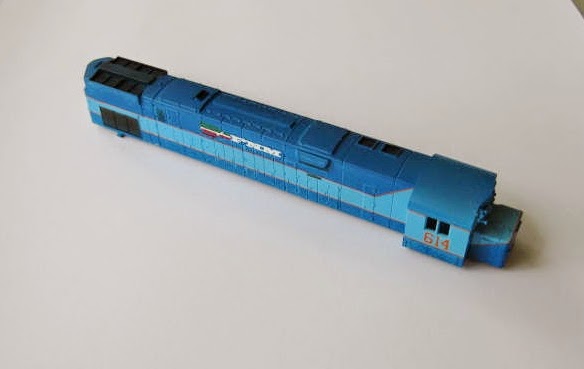Had most of the crew around last night for the regular monthly operating session on the SFRSD.
I usually send out a bulletin that is the official notice to all the guys that the night is on. Actually there are a few of us that hold sessions through out the year so at the beginning of each year we send out a calendar so we can all fit in with one another.
Last weeks bulletin was number 92 so there have been the odd one or two over the years sent to the guys.
Not all the guys could make last nights session so we just had the just nine of us.
After show and tell (which can take up to half an hour on some nights) the session swung into action with the fast clock set to 4 to 1 and starting at 6.45 am. This gives the yard masters at Augusta and Flynn plus the crew for the first two trains time to acquire their locos and hook up the pre-staged trains #1 and 2.
Train #1 is a loaded grain train that departs Augusta at 7.10 am headed for Flynn while train #2 and empty grain leaves Flynn at 7.30 am. These two meet at Red Rock if the dispatcher is doing his job (I took the first session) and Greg J took the next.
Here are a few snaps from the night.
 |
| Brendan was in charge of Flynn Yard while Ron works beside him. |
 |
| John likes to look after the Augusta Yard. Here he is studying the car cards for the next train. |
 |
| Here's Greg at the dispatchers desk. Brendan and Ron are at Flynn. |
 |
| Dennis, Vic and Noel are at Winfield. Just caught Vic at a bad time. |
 |
| And here's Darren patiently waiting for his train |
 | |
| I got to run the mixed freight from Augusta to Flynn and so added the track geometry car | for its first run. |
Catch you next time.
Rod.









